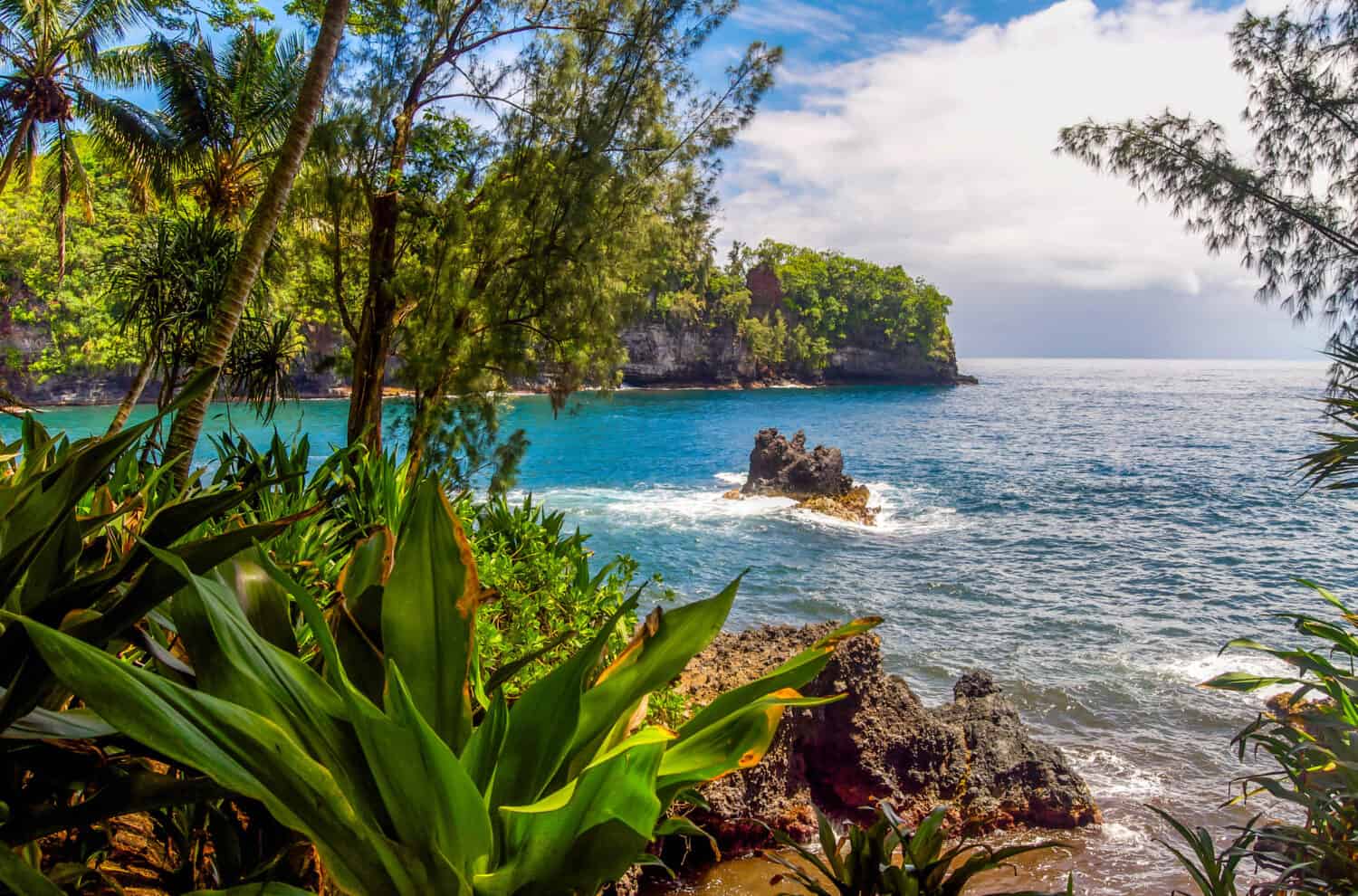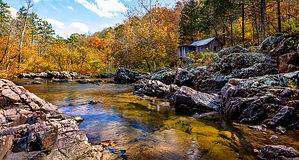Hawaii is a state with so much natural beauty that it’s hard to look away sometimes. On the islands of Hawaii, you can find thick, dense, and lush forests, roaring waterfalls, and fantastic mountain peaks. In all of these, thousands of trees stand tall, all with their unique shapes and sizes. Some, though, stand out more than others. Follow along to learn more about the 11 most iconic native trees in Hawaii.
Koa
The first tree on our list is the Koa, a very common green tree endemic to Hawaii. The scientific name for this lovely tree is Acacia koa. You can find this tree in Hawaiʻi, Maui, and Oʻahu. Koa trees are large, reaching anywhere from 49 to 98 feet. They are also rather wide with a stretch of up to 125 feet. Koa trees produce green-yellow flowers year-round or seasonally depending on the region.

Koa trees can reach up to 98 feet tall in good conditions.
Uhiuhi
Next on our list is the Uhiuhi, also known as the kāwaʻu and kea. The scientific name for this plant is Mezoneuron kauaiense. Sadly, this lovely plant is listed as Critically Endangered on the IUCN Red List as it’s threatened by the highly invasive fountaingrass and other non-native plants. There are only about 50 to 100 Uhiuhi plants left in the wild. Some experts estimate there are fewer than 50. These lovely and rare flowering plants are vibrant red and green and reach up to 33 feet tall.
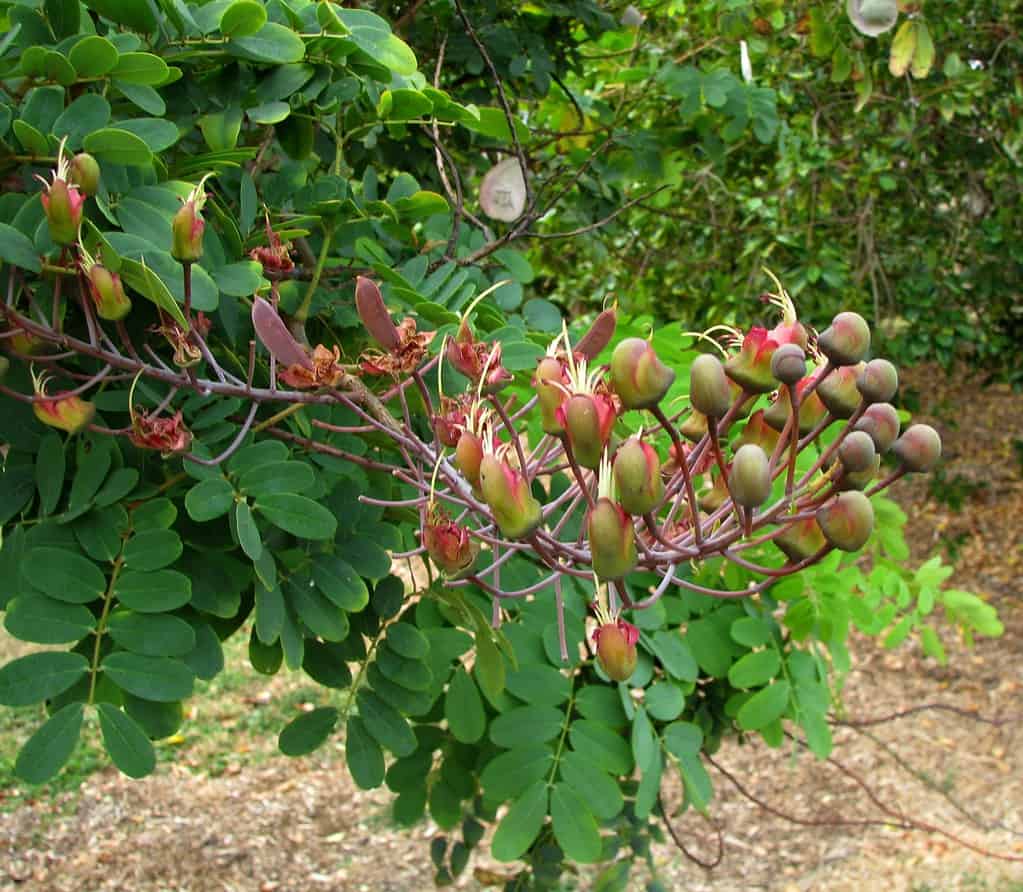
The Uhiuhi is extremely rare. There may be less than 50 left in the wild.
Kōpiko
Another iconic tree native to Hawaii is the Kōpiko. It’s also called the forest wild coffee tree. It’s endemic to Hawaii. The scientific name of this plant is Psychotria mariniana. The Kōpiko is a tree that varies in size. It can be as small as 15 feet or as large as over 50 feet tall. This tree also has bright green shiny leaves and produces small orange fruit.
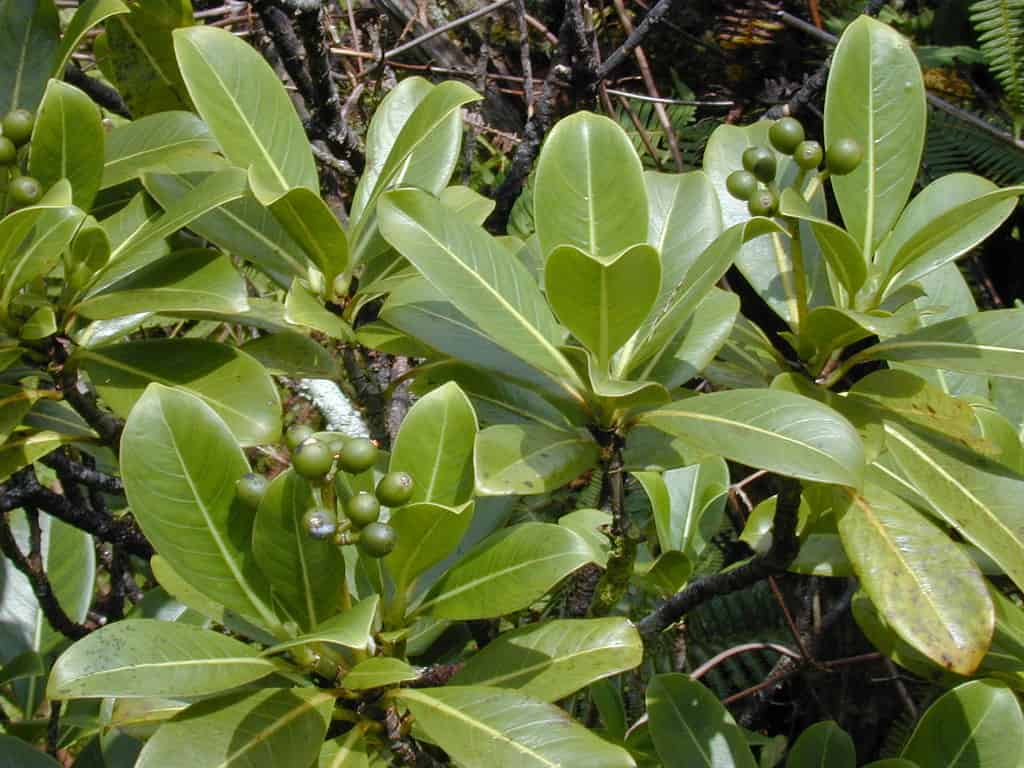
Kōpiko trees are about 15 to over 50 feet tall. These trees flower and produce small orange fruits.
Hawaiʻi Dogweed
Have you ever heard of the Hawaiʻi dogweed? It’s a vulnerable and decreasing flowering tree in the Rubiaceae family. This tree is endemic to Hawaii and thrives in different habitats including lava plains and mixed mesic forests. Hawaiʻi dogweed reaches around 30 feet tall. They flower during any season and produce purplish to black fruit.
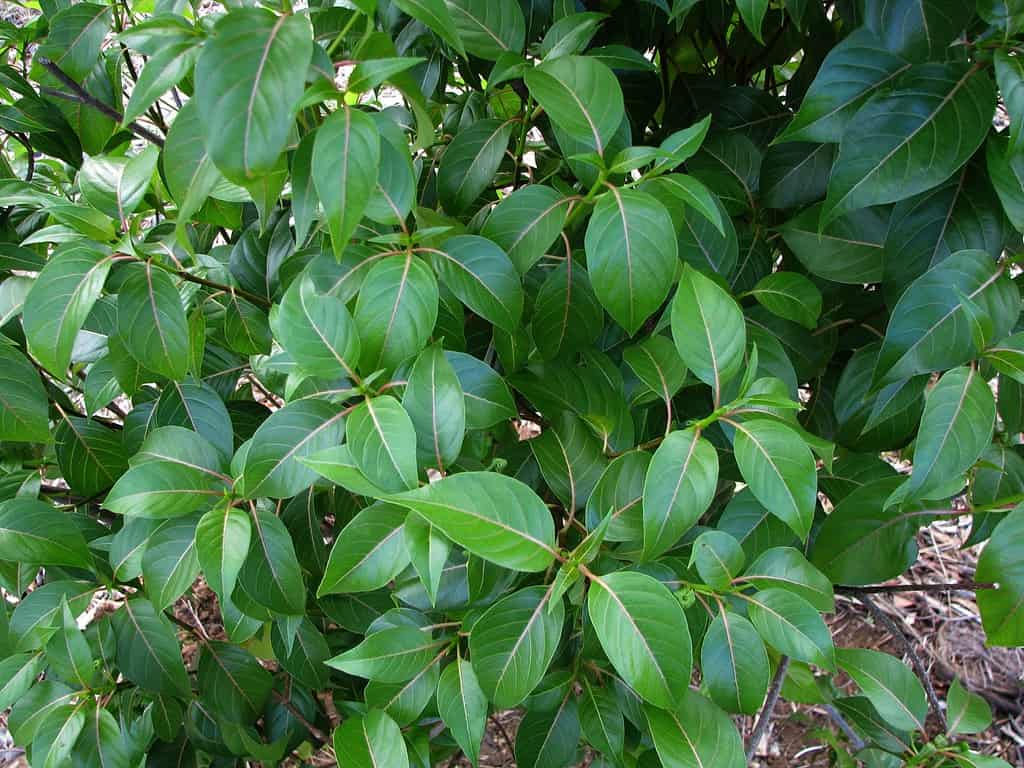
Hawaiʻi dogweed trees reach about 30 feet tall.
©David Eickhoff from Pearl City, Hawaii, USA / CC BY 2.0 – Original / License
Smallflower ʻaiea
Another amazing plant on our list of iconic trees native to Hawaii is the small flower ʻaiea. This lovely plant is a member of the Solanaceae family. Sadly, like a few other plants on this list, it’s listed as Critically Endangered on the IUCN Red List. There may be as little as 50 smallflower ʻaiea in the wild.
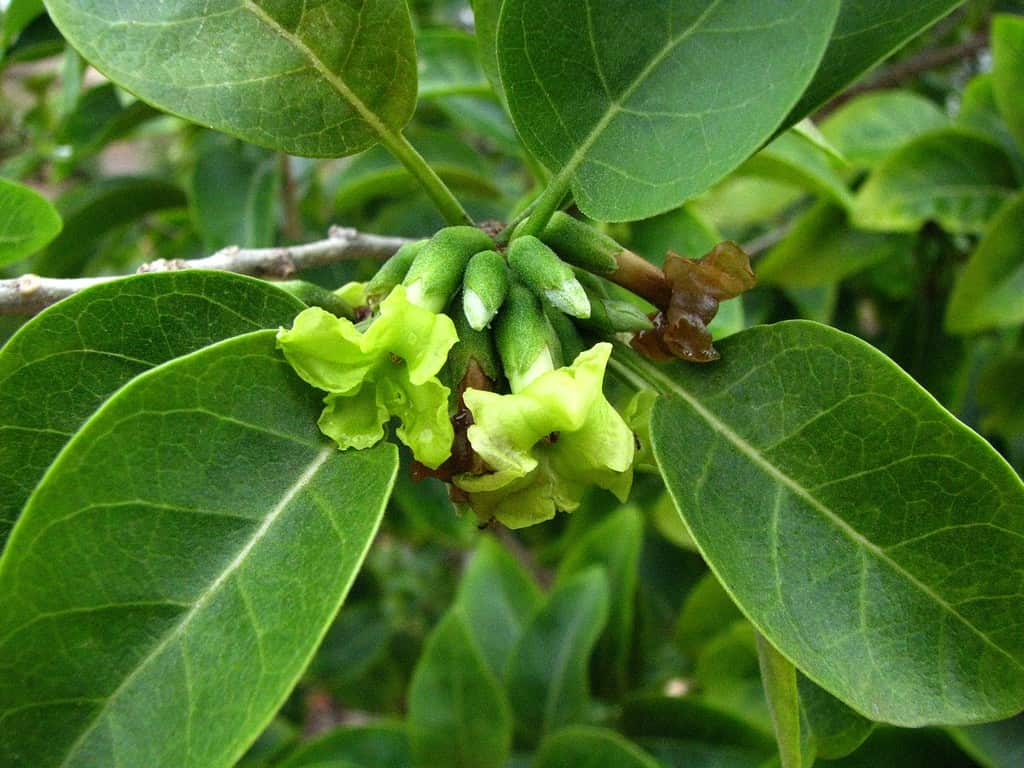
The smallflower ʻaiea is an endangered tree native to Hawaii.
©David Eickhoff from Pearl City, Hawaii, USA, / CC BY 2.0 – Original / License
Kauaʻi Spurge
The Kauaʻi spurge is a flowering tree in the Euphorbiaceae family. This tree is endemic to the islands of Kauaʻi and Oaʻhu. You can find this tree at elevations from 673 to 2,198 feet. It is about 9.8 to 45.9 feet tall. Because of habitat loss, this flowering tree is Endangered.
Lama
Another native Hawaiian tree is the lama. It’s a medium-sized tree in the Ebenaceae family. This tree is about 20–39 feet tall. The scientific name for lama is Diospyros sandwicensis. This flowering tree grows at elevations between 16 and 4,003 feet. It also grows in different habitats including dry, coastal mesic, mixed mesic, and wet forests.
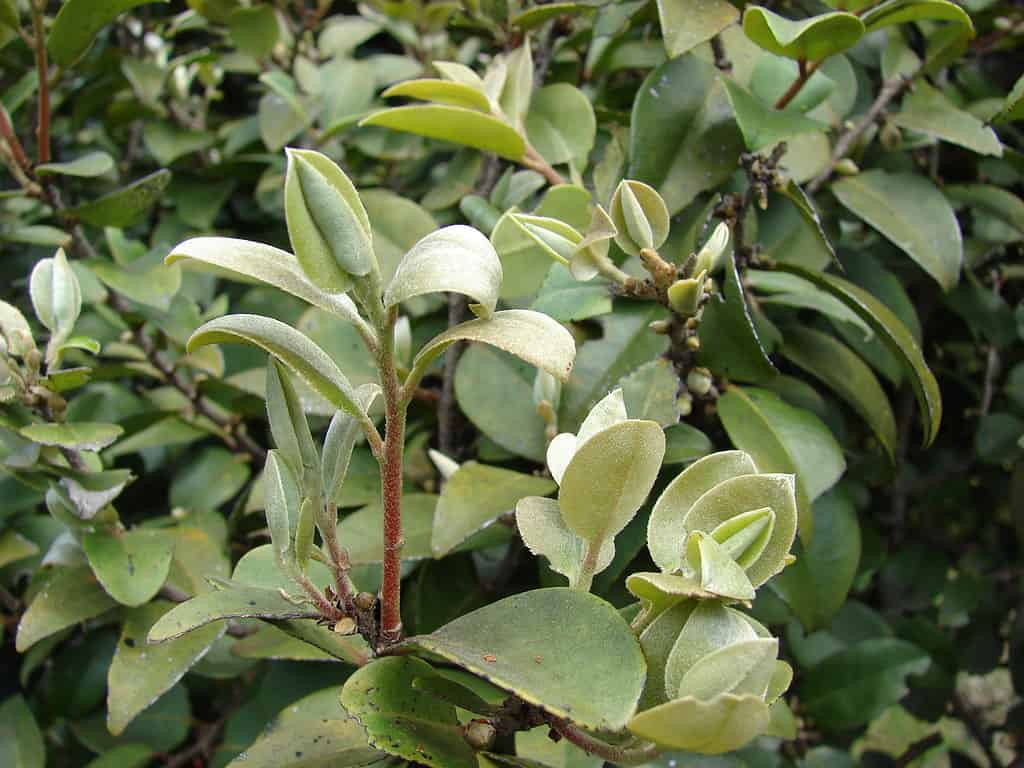
The lama is a small to medium-sized tree native to Hawaii.
ʻOhiʻa Lehua
The ʻOhiʻa Lehua is difficult to ignore. This lovely tree produces stunning and bright red ‘fluffy’ flowers. It’s native to the six largest islands of Hawaiʻi and is a member of the Myrtaceae family. The scientific name for this tree is Metrosideros polymorpha. This common tree may also produce yellow flowers. It’s about 66 to 88 feet tall as a tree, but may also grow as a prostrate shrub.
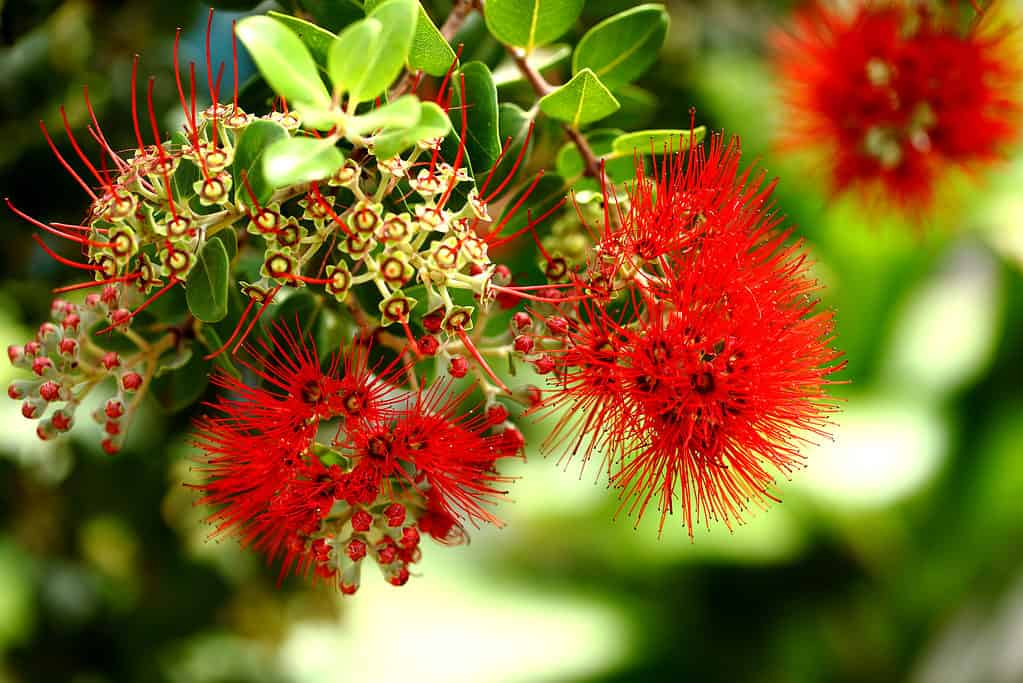
‘Ohi’a lehua known as Metrosideros polymorpha is a native plant in Hawaii.
©Aaron Miyamoto/Shutterstock.com
Wiliwili
The Wiliwili is a tree endemic to the Hawaiian islands. It’s a member of the pea family and is best known for producing showy twisted flowers and seedpods. The tree is about 15 to 30 feet tall with a diameter ranging from 0.98 to 2.95 feet. Currently, this vibrant flowering tree is listed as Vulnerable on the IUCN Red List.
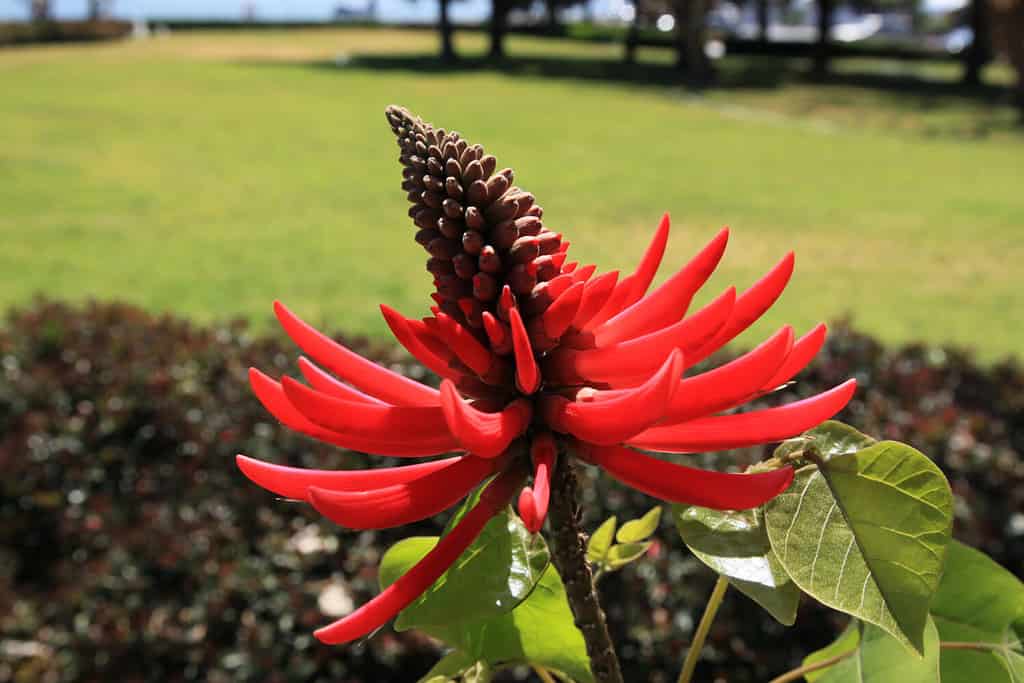
Wiliwili is listed as Vulnerable on the IUCN Red List.
©Anastasiia-S/Shutterstock.com
ʻIliahialoʻe
You can’t forget about the ʻIliahialoʻe when discussing the most iconic trees native to Hawaii. The ʻIliahialoʻe is also known as coastal sandwood. Its scientific name is Santalum ellipticum. This plant is a member of the mistletoe family. It’s a relatively small tree at about 3.3 to 16.4 feet tall. While you can still find this flowering tree in many Northwestern Hawaiian Islands, they’ve been extirpated from Laysan and Kahoʻolawe.
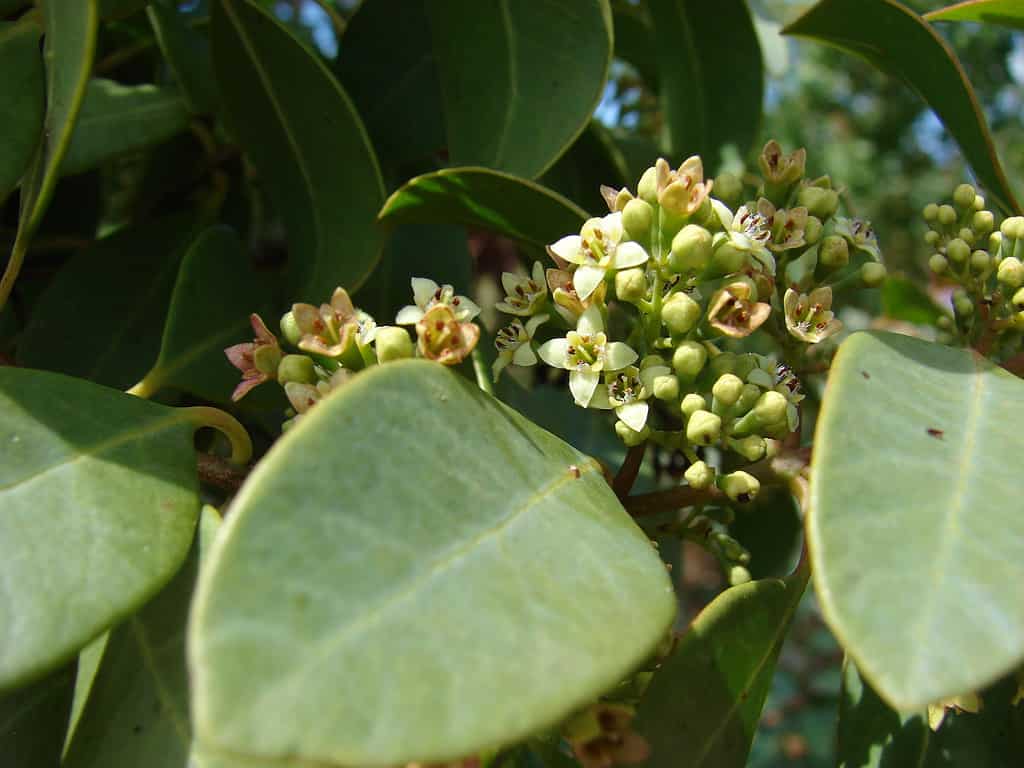
The ʻIliahialoʻe goes by many names including the coastal sandwood.
Nānū
Next on our list is the Nānū, which produces delicate and fragrant six-petaled white flowers. It’s sometimes also referred to as the forest gardenia. Currently, this lovely flowering tree is listed as Critically Endangered on the IUCN Red List. This small tree only reaches about 16 feet tall. You can only find a small number of these plants on Maui, Molokaʻi, Oʻahu, and Lānaʻi, and the Big Island.
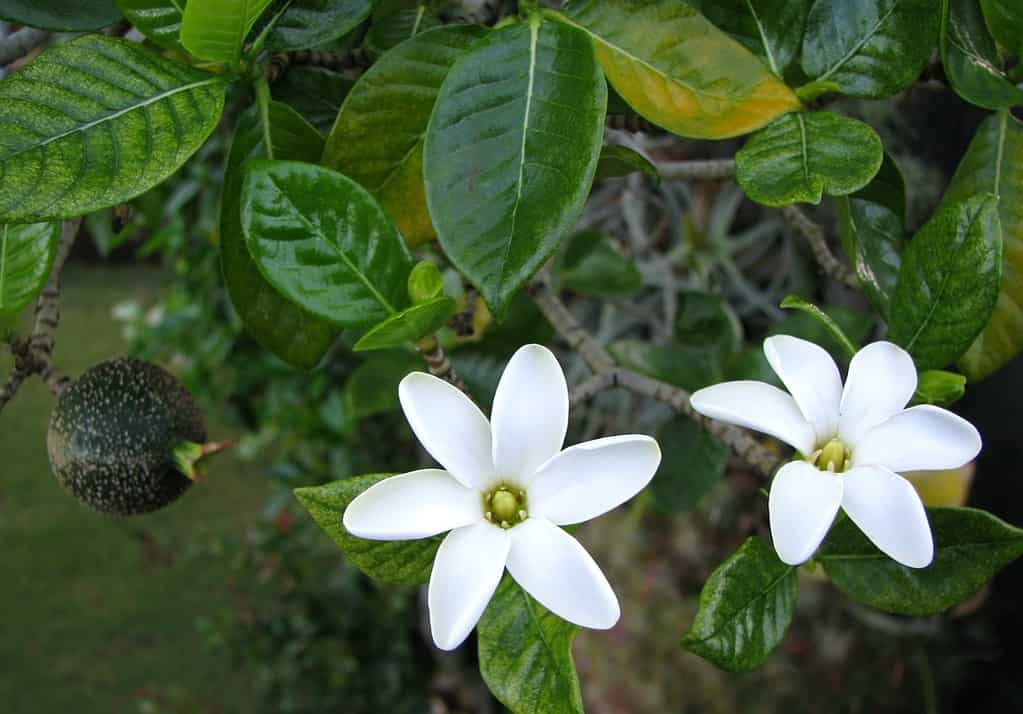
The Nānū is listed as Critically Endangered on the IUCN Red List.
©David Eickhoff from Pearl City, Hawaii, USA / CC BY 2.0 – Original / License
Thank you for reading! Have some feedback for us? Contact the AZ Animals editorial team.

